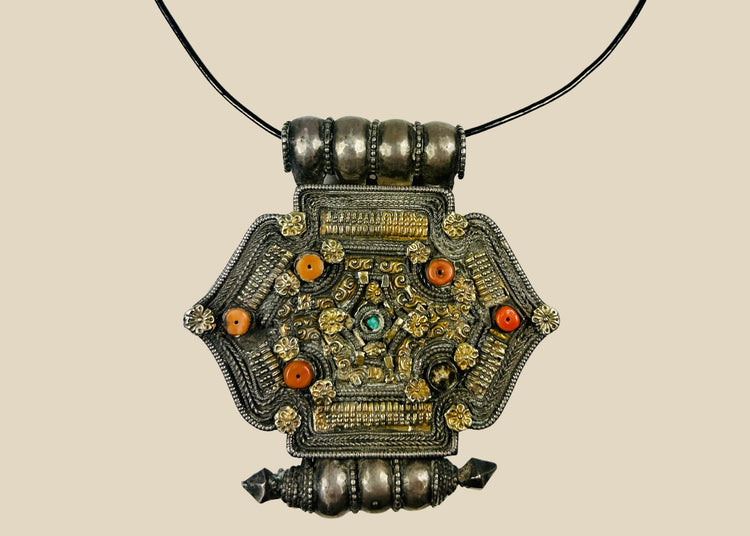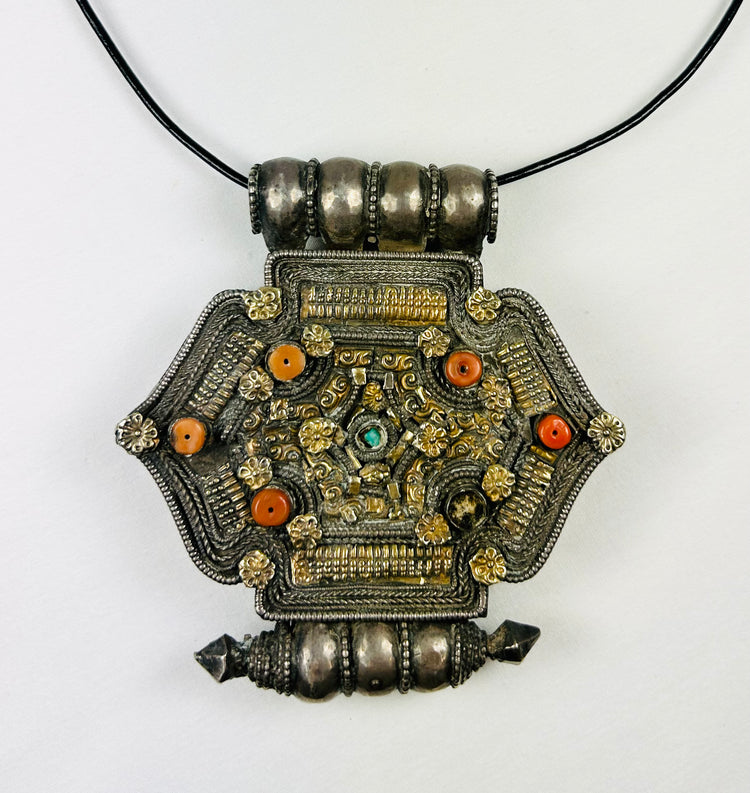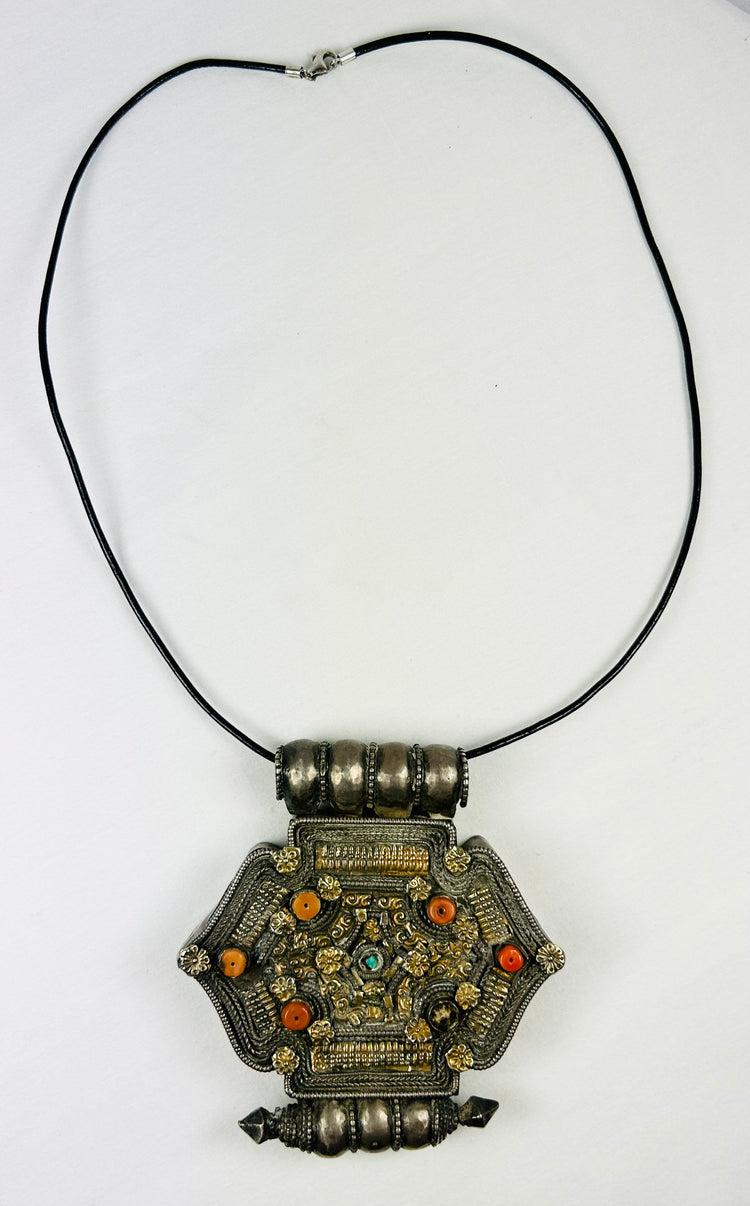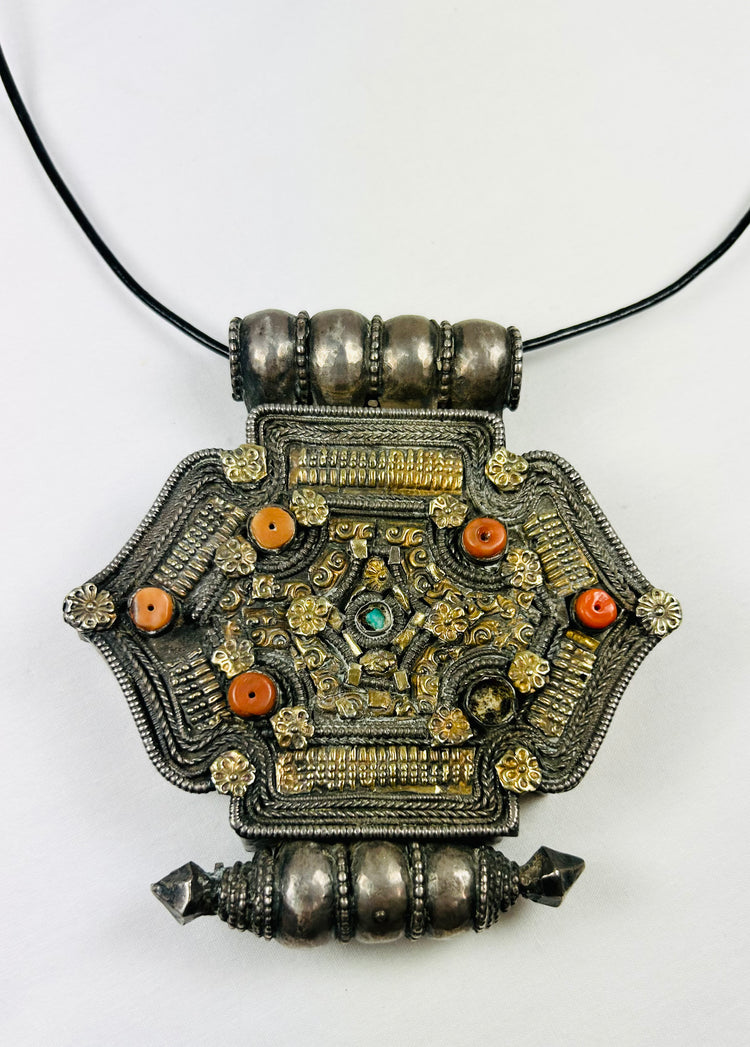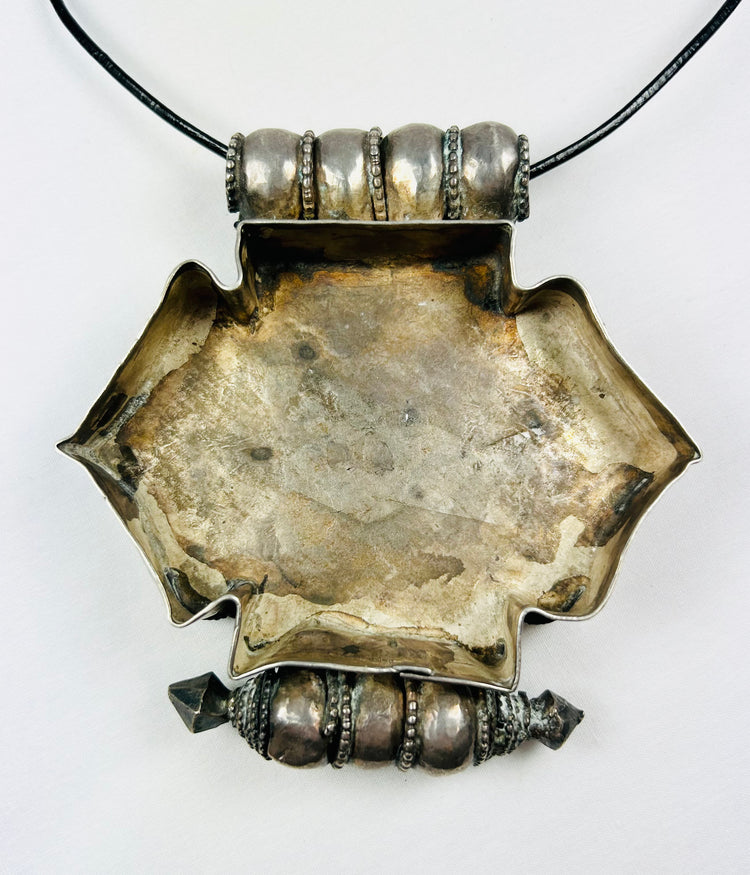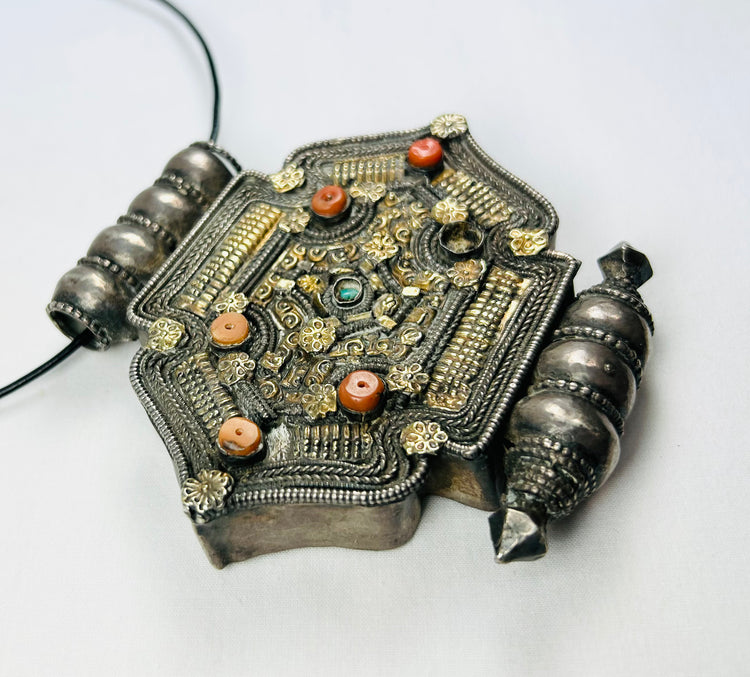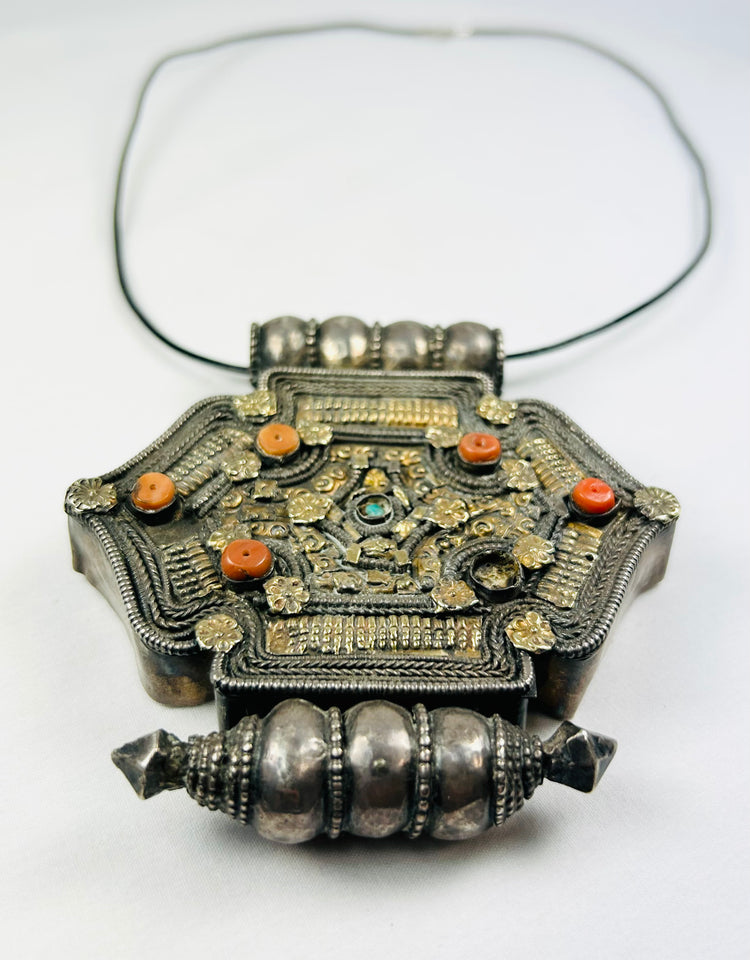Tibetan–Nepalese Ghau Pendant | Silver-Tone Parcel-Gilt Filigree with Coral and Turquoise | Circa Late 19th–Early 20th Century
Description
More
Less
Historical Context & Origin
Region: Himalayas — Tibet/Nepal (Gau/Ghau portable shrine tradition)
Material: Silver-tone alloy with parcel-gilt filigree and rosette appliqués; inset coral beads and a small turquoise (or glass) cabochon; later leather cord with clasp
Period: Late 19th–early 20th century
Description
Substantial, hexagonal gau amulet pendant richly decorated in parcel-gilt silverwork. The face is built up with concentric wire borders, coiled filigree, and tiny floral rosettes surrounding a central green cabochon, punctuated by five small coral insets. Broad, hammered tube elements act as bales at the top and bottom, allowing the pendant to be worn or tied to a pilgrim strap.
The reverse shows the original hollow reliquary cavity (back plate no longer present), consistent with prayer-box construction meant to house protective mantras or relic slips. Deep, even patina throughout; handsome presence on the included modern leather cord.
Features
- Himalayan gau/ghau reliquary pendant
- Silver-tone alloy with parcel gilding, filigree & rosette appliqués
- Inset coral beads and a small turquoise (or glass) cabochon
- Large tubular bales for suspension; built as a hollow amulet box
- Later leather cord with clasp included
Cultural Significance
Gau pendants served as portable shrines in Tibetan and Nepalese practice, worn on the chest during travel and ritual to carry protective texts, relics, or votive substances. The combination of coral and turquoise is emblematic in Himalayan jewelry, symbolizing vitality and protection.
Condition
Good antique condition with age-commensurate wear: expected tarnish and gilding rub; minor surface knocks; a coral stone is missing; small losses/age cracks to some appliqués; rear cover panel missing, leaving the reliquary cavity open. Stones/beads show typical age wear. Presents beautifully.
Dimensions (approximately)
Width: 3.5 in
Height: 4 in
Overall span: 5 in
Age
Late 19th–early 20th Century, Himalayan (Tibet/Nepal) gau amulet tradition.
Metal content untested; sold as silver-tone alloy with parcel gilding
Description
Historical Context & Origin
Region: Himalayas — Tibet/Nepal (Gau/Ghau portable shrine tradition)
Material: Silver-tone alloy with parcel-gilt filigree and rosette appliqués; inset coral beads and a small turquoise (or glass) cabochon; later leather cord with clasp
Period: Late 19th–early 20th century
Description
Substantial, hexagonal gau amulet pendant richly decorated in parcel-gilt silverwork. The face is built up with concentric wire borders, coiled filigree, and tiny floral rosettes surrounding a central green cabochon, punctuated by five small coral insets. Broad, hammered tube elements act as bales at the top and bottom, allowing the pendant to be worn or tied to a pilgrim strap.
The reverse shows the original hollow reliquary cavity (back plate no longer present), consistent with prayer-box construction meant to house protective mantras or relic slips. Deep, even patina throughout; handsome presence on the included modern leather cord.
Features
- Himalayan gau/ghau reliquary pendant
- Silver-tone alloy with parcel gilding, filigree & rosette appliqués
- Inset coral beads and a small turquoise (or glass) cabochon
- Large tubular bales for suspension; built as a hollow amulet box
- Later leather cord with clasp included
Cultural Significance
Gau pendants served as portable shrines in Tibetan and Nepalese practice, worn on the chest during travel and ritual to carry protective texts, relics, or votive substances. The combination of coral and turquoise is emblematic in Himalayan jewelry, symbolizing vitality and protection.
Condition
Good antique condition with age-commensurate wear: expected tarnish and gilding rub; minor surface knocks; a coral stone is missing; small losses/age cracks to some appliqués; rear cover panel missing, leaving the reliquary cavity open. Stones/beads show typical age wear. Presents beautifully.
Dimensions (approximately)
Width: 3.5 in
Height: 4 in
Overall span: 5 in
Age
Late 19th–early 20th Century, Himalayan (Tibet/Nepal) gau amulet tradition.
Metal content untested; sold as silver-tone alloy with parcel gilding
You May Also Like




















